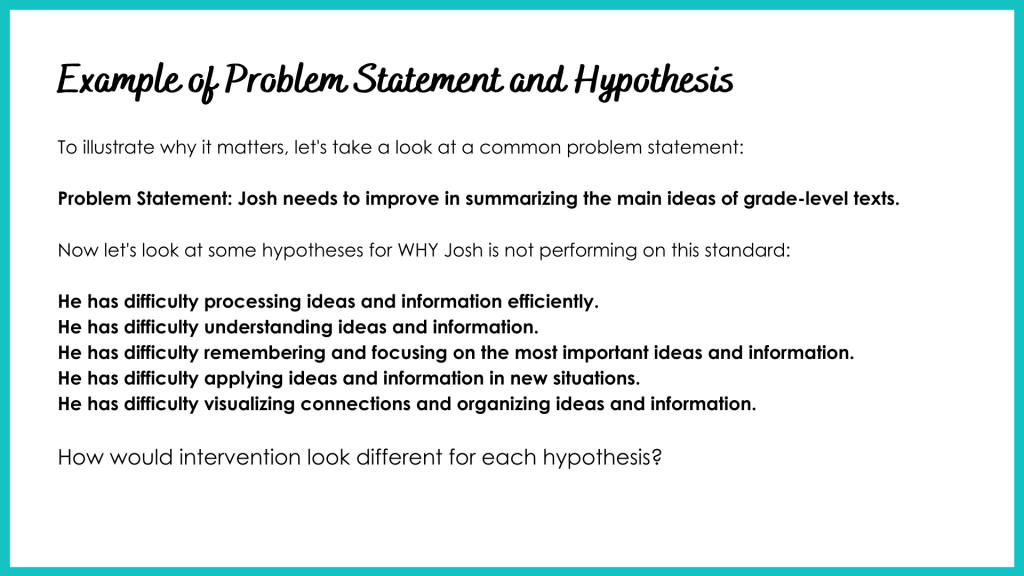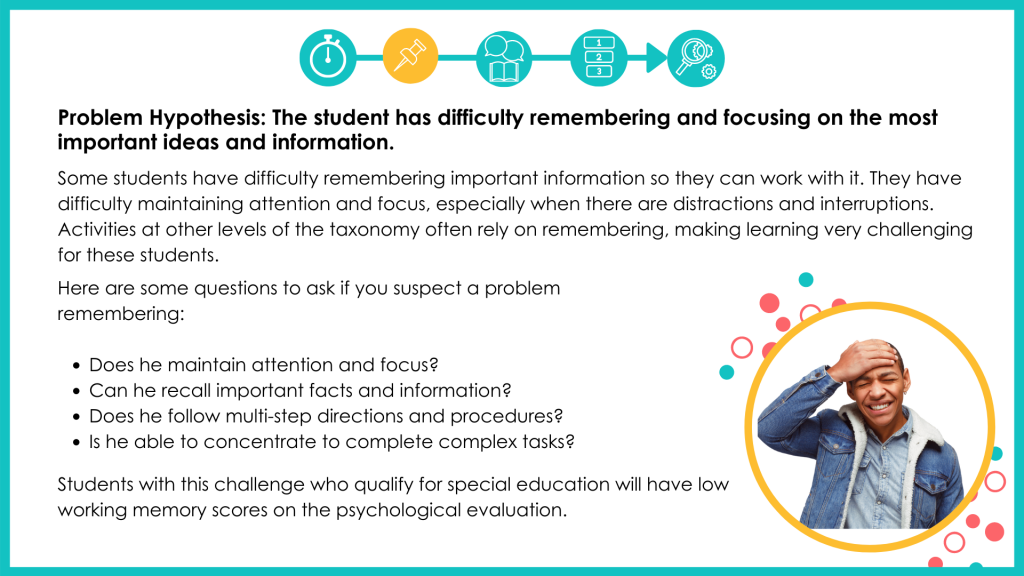In this presentation, you will learn how to write MTSS problem statements. We will cover 2 parts of a problem: the problem statement and the problem hypothesis. Then we will explore the 5 thinking challenges that impact low performance across the taxonomy.
The other day I was preparing for an upcoming workshop about this very topic. I thought it would be interesting for people to assess themselves to get a feel for the content. So I took a quiz I found online at My Learning Strengths. It was super easy and fast. The results were not surprising. Try it out.
My cognitive strength according to this survey was visual-spatial. I do love to create graphics. I rarely read directions. I am able to construct mental images pretty easily. My cognitive weakness? I need to improve on my perceptual-motor skills. This one is not a major scale on a test like the WISC, but it is a definite weakness for me. Just ask my disappointed frisbee-loving dogs! Oh well. Here is this week’s presentation.











If you have any questions or are wondering if Dot It is a good fit for your school or district, contact us and we will be happy to help. We have been where you are. We truly understand and want to help wherever we can.






